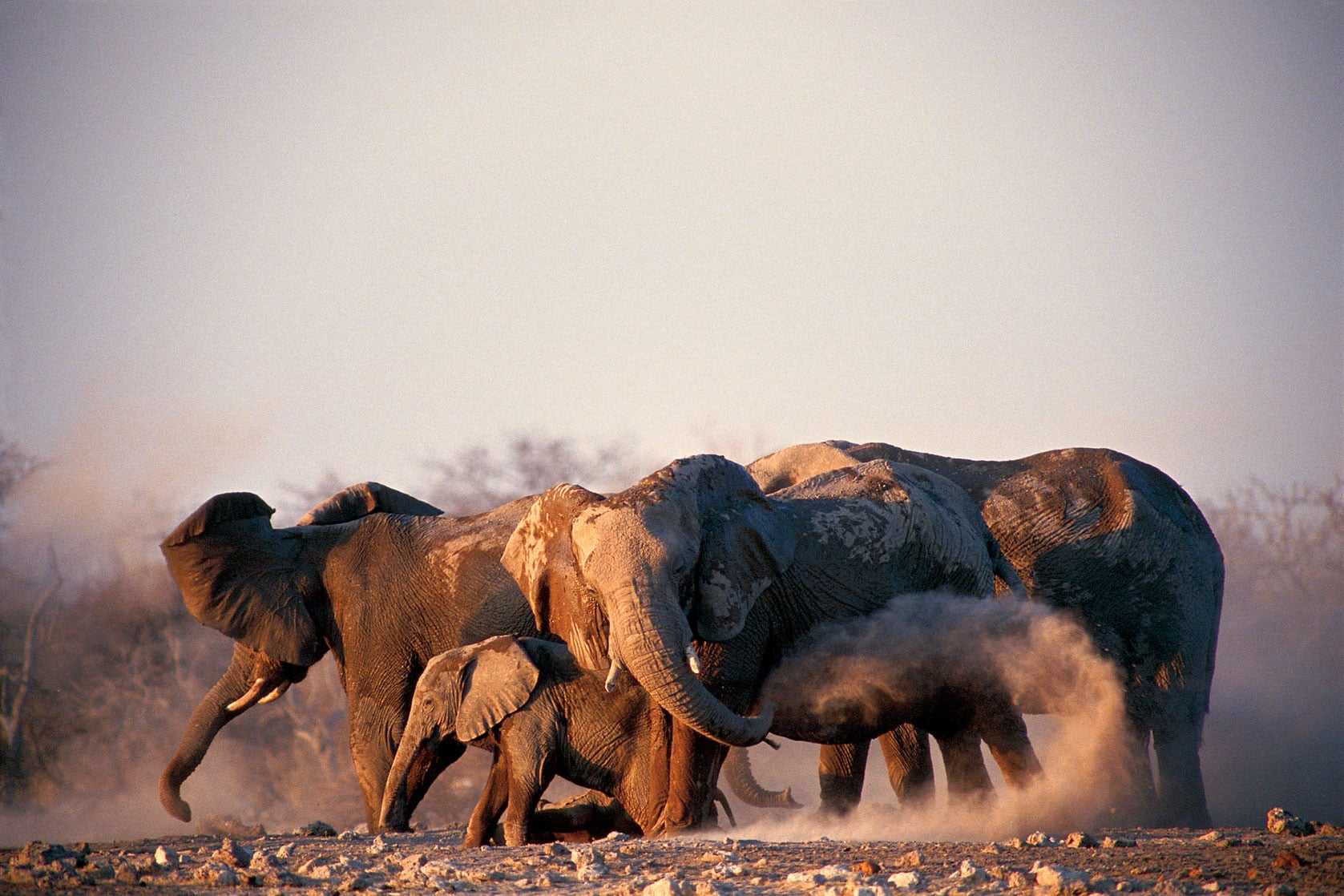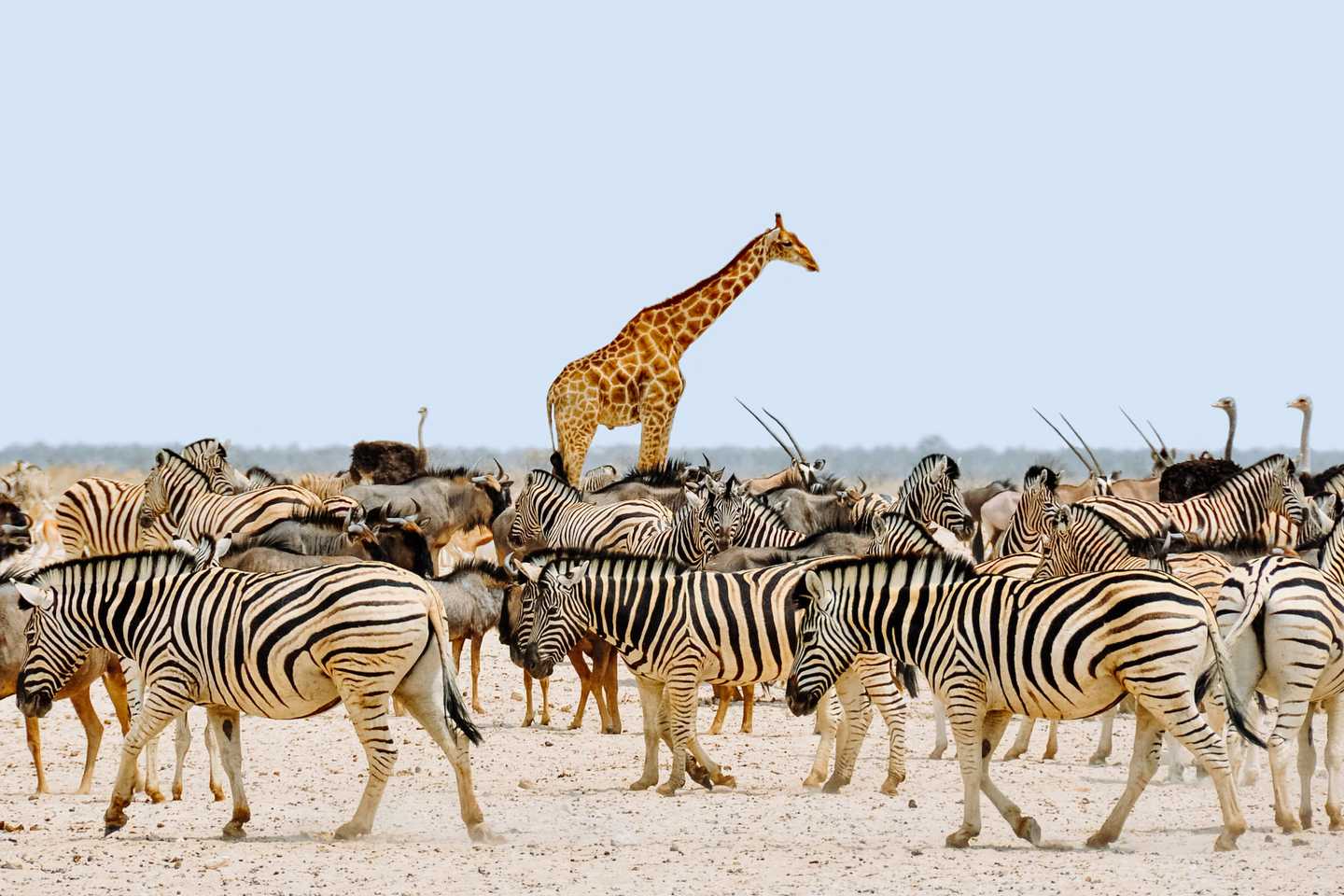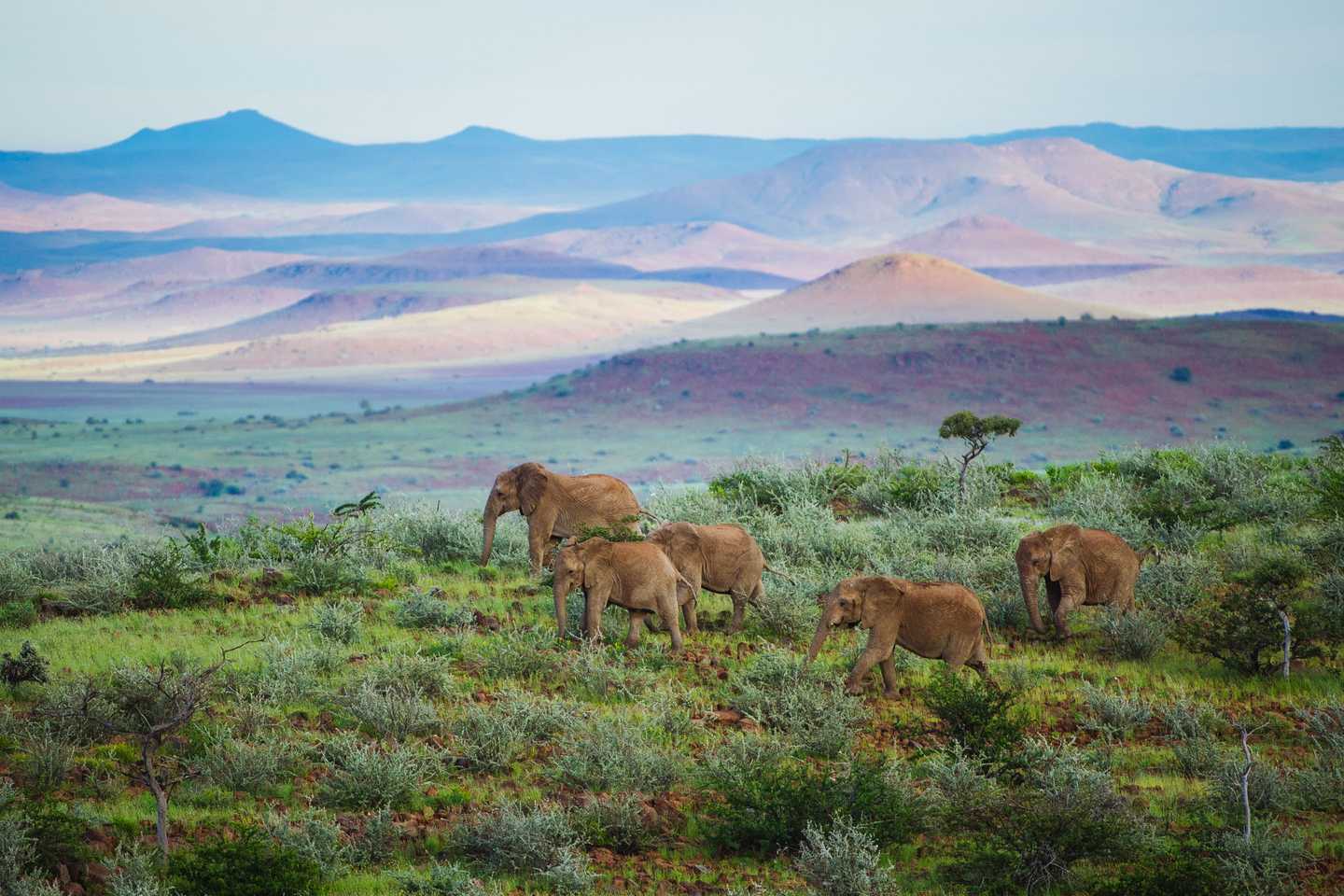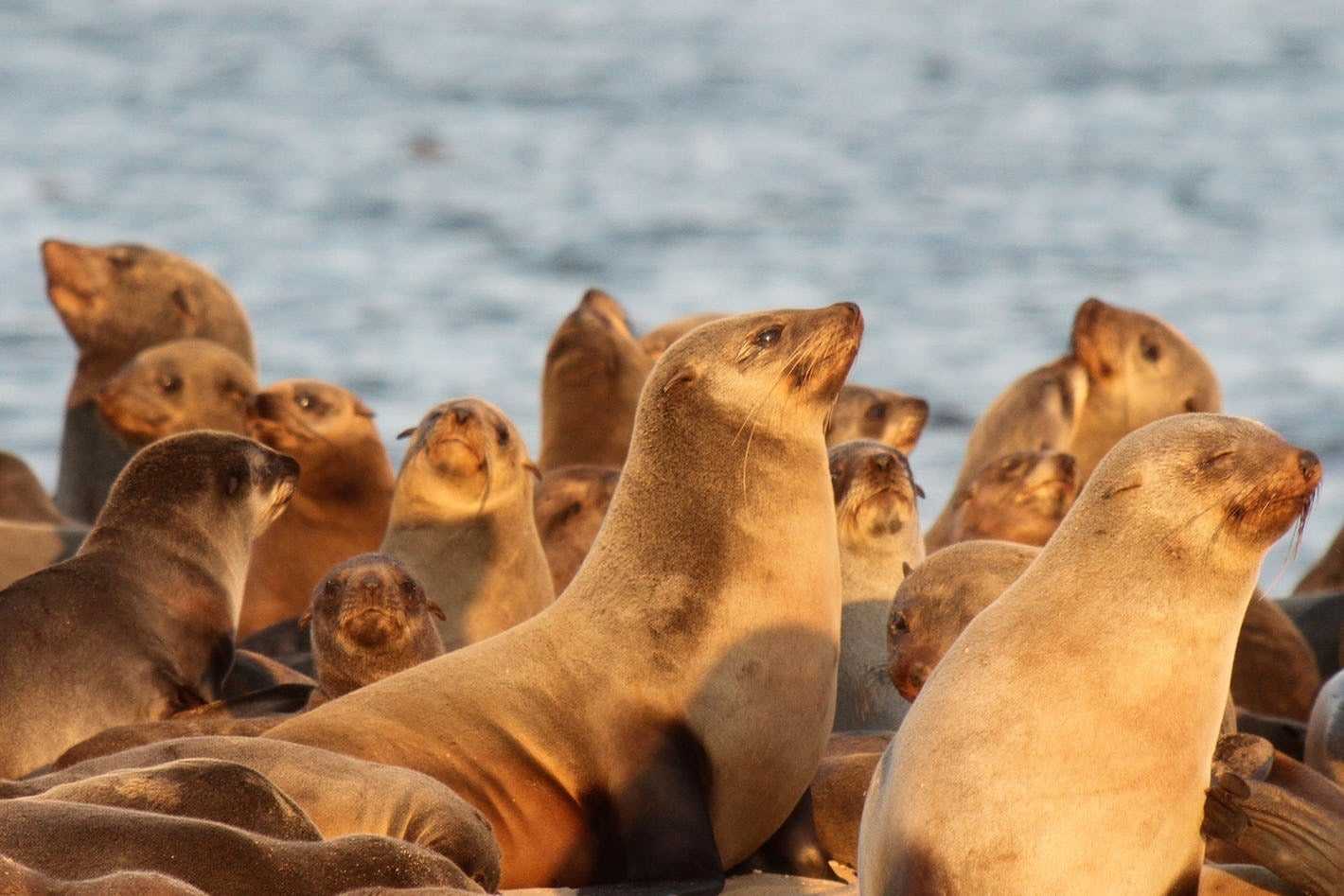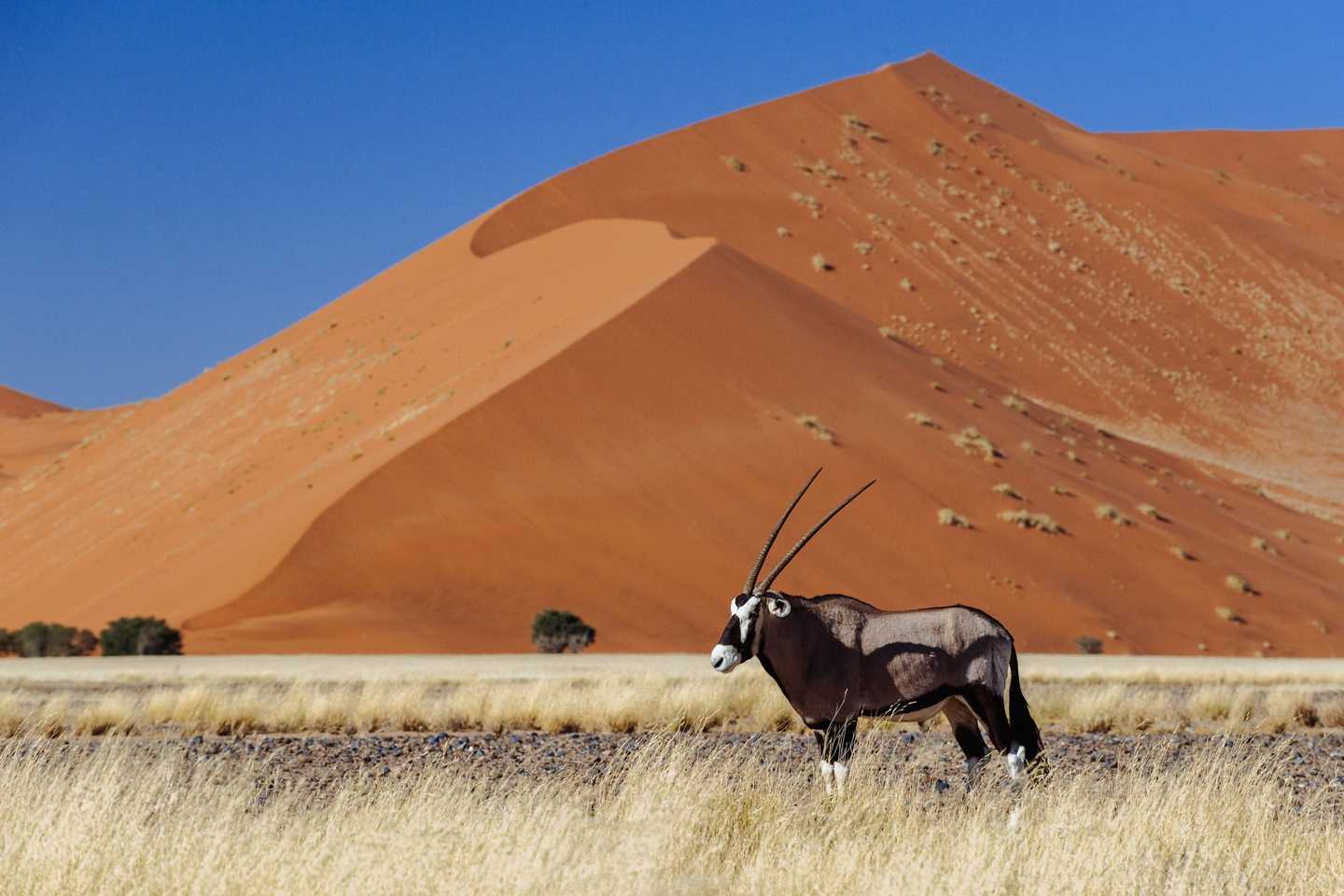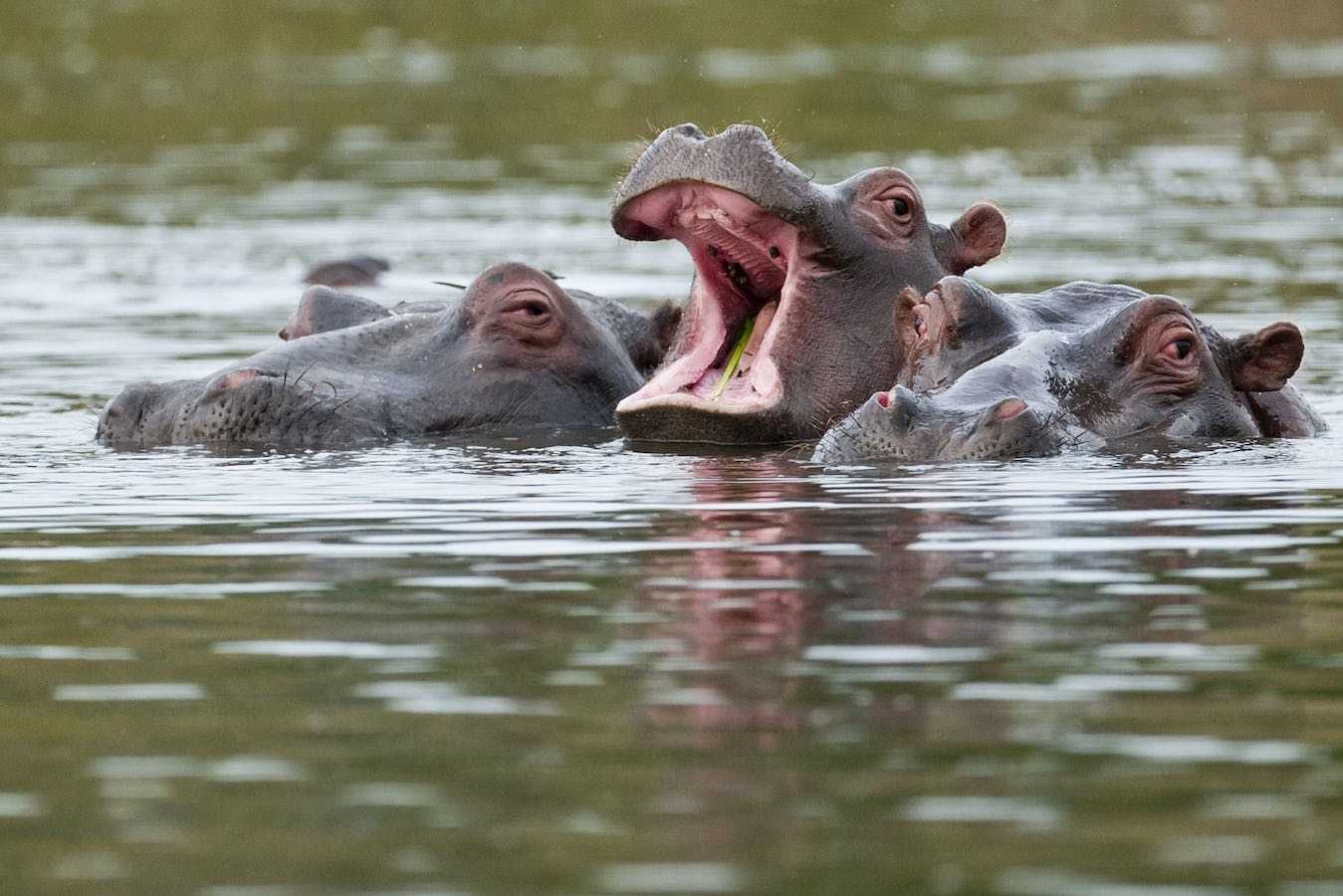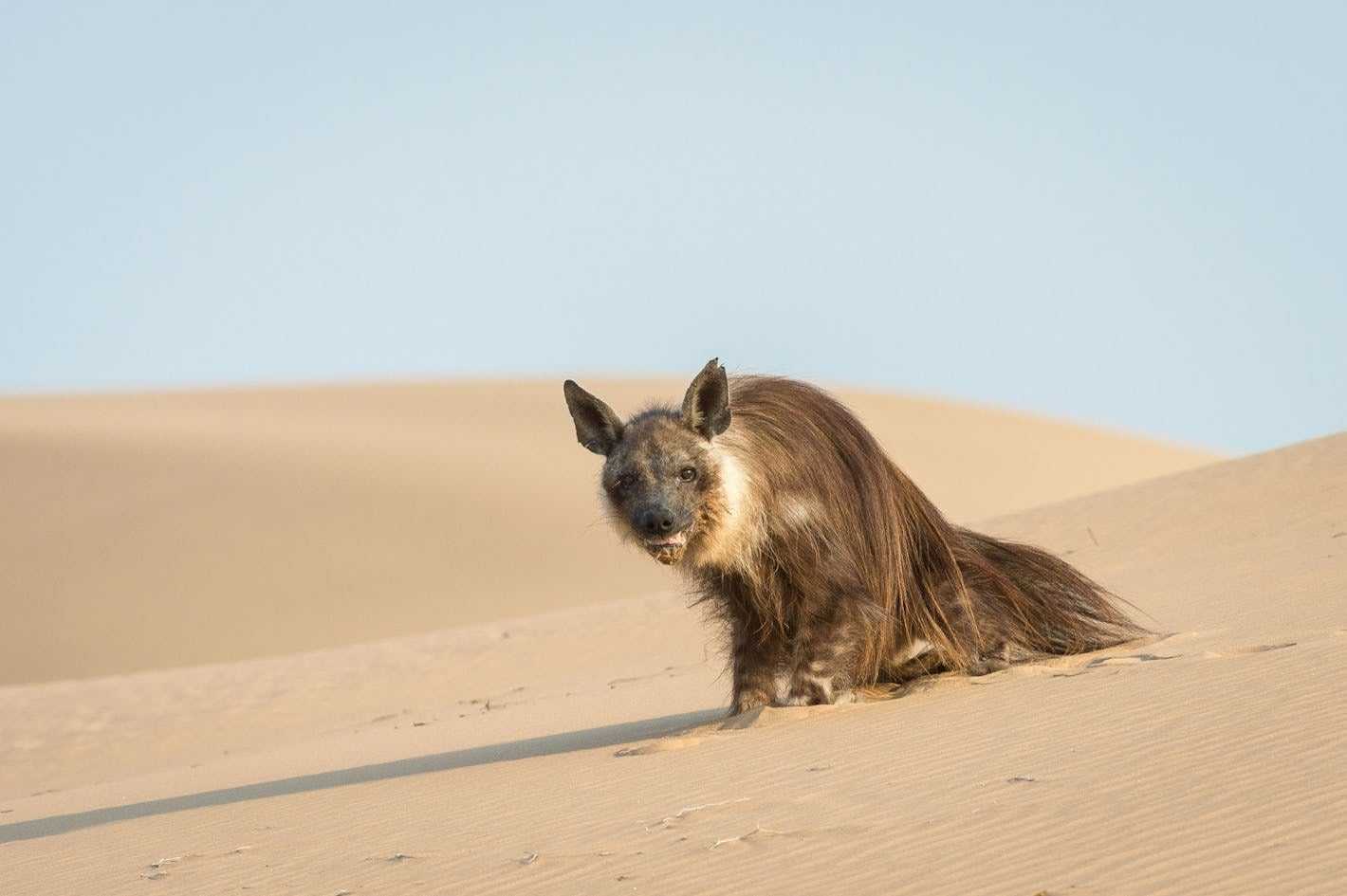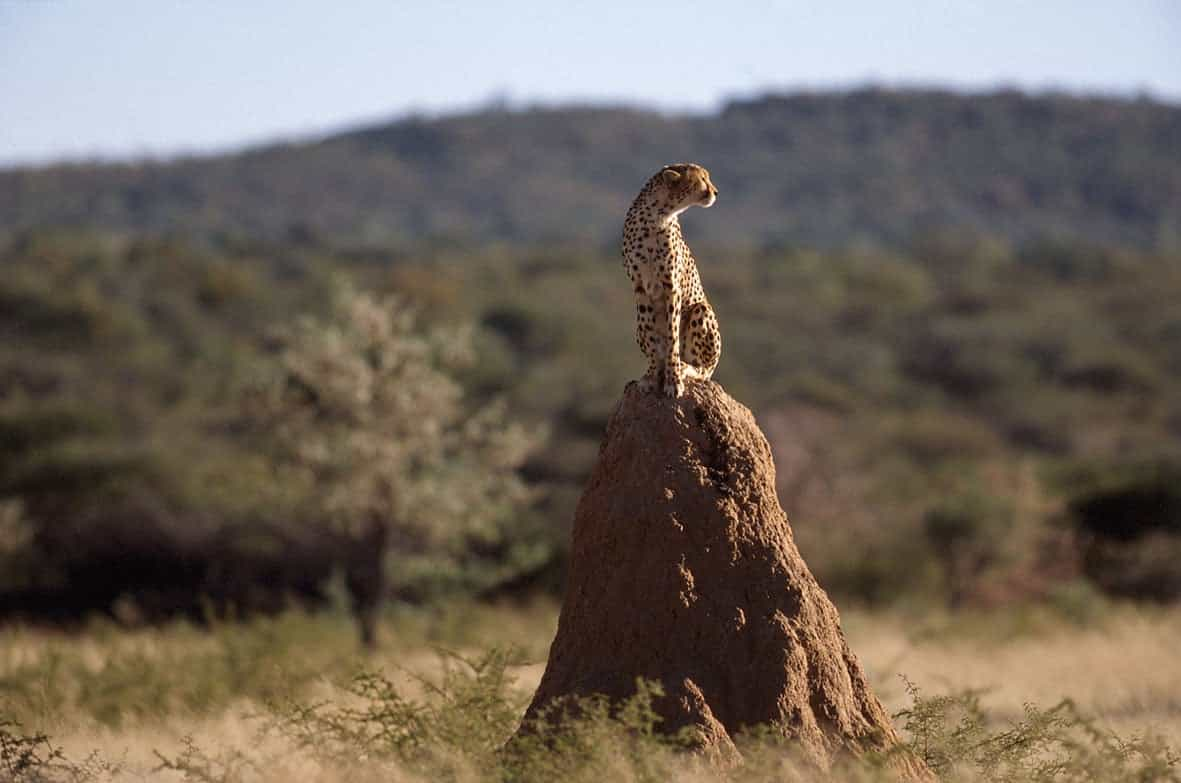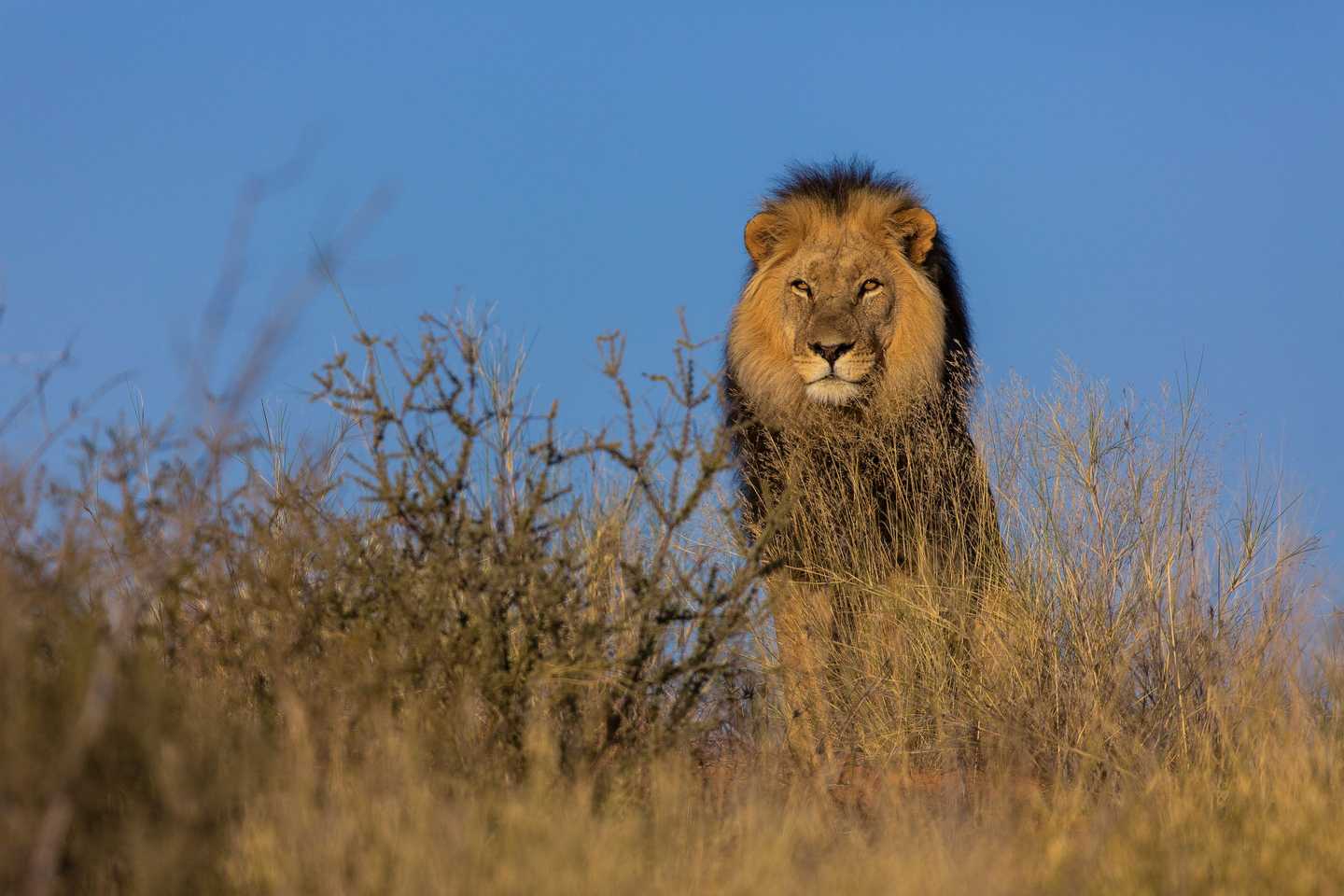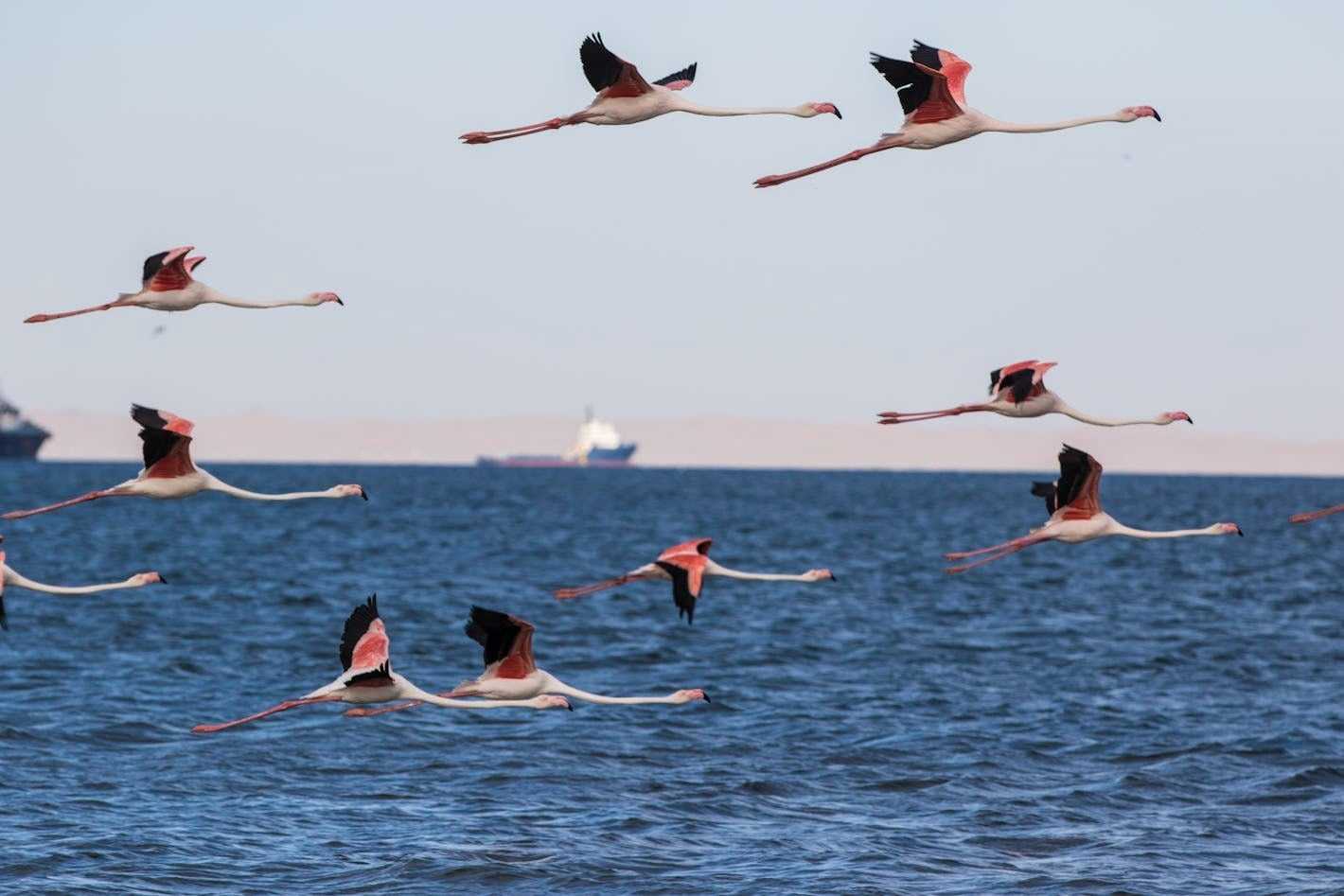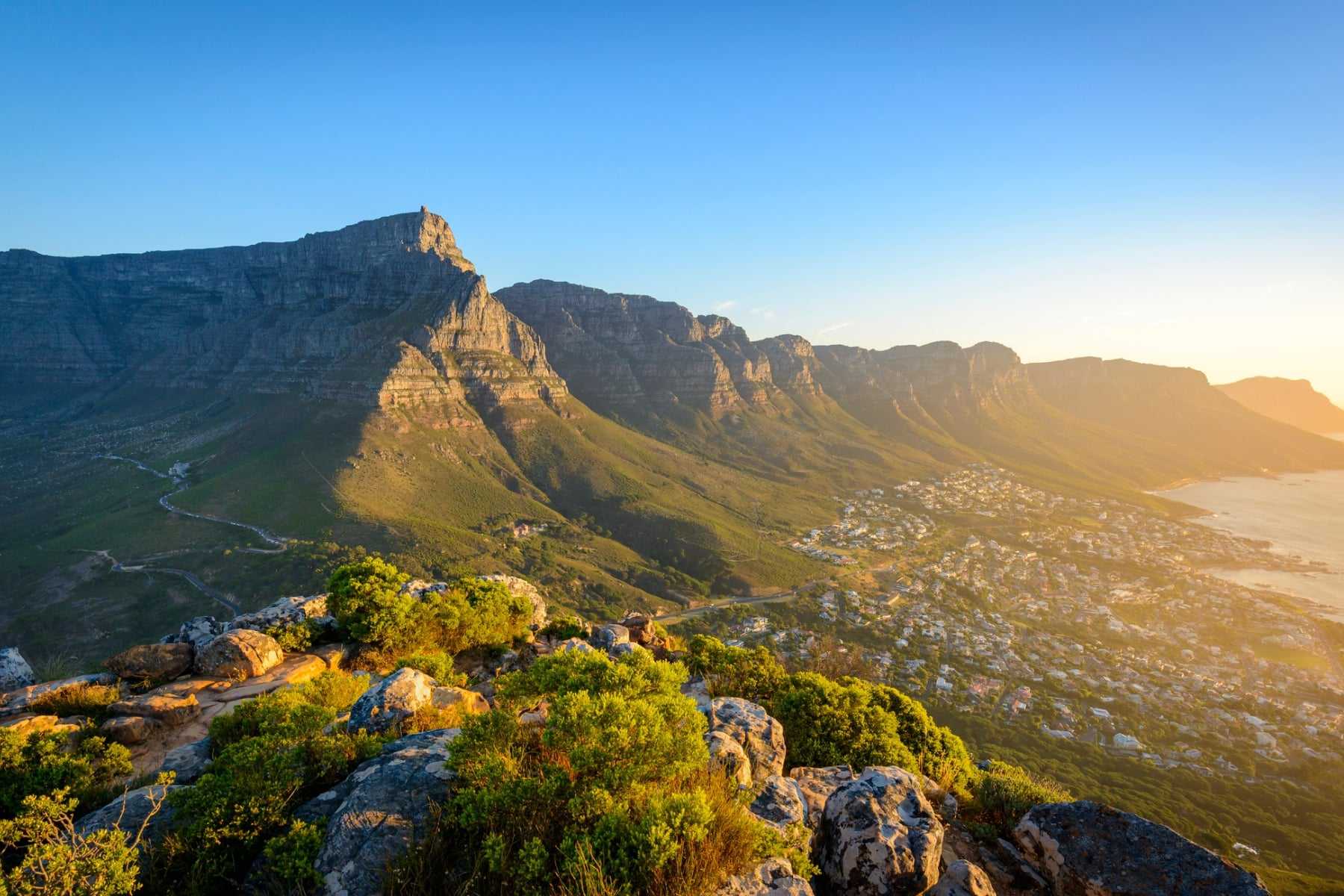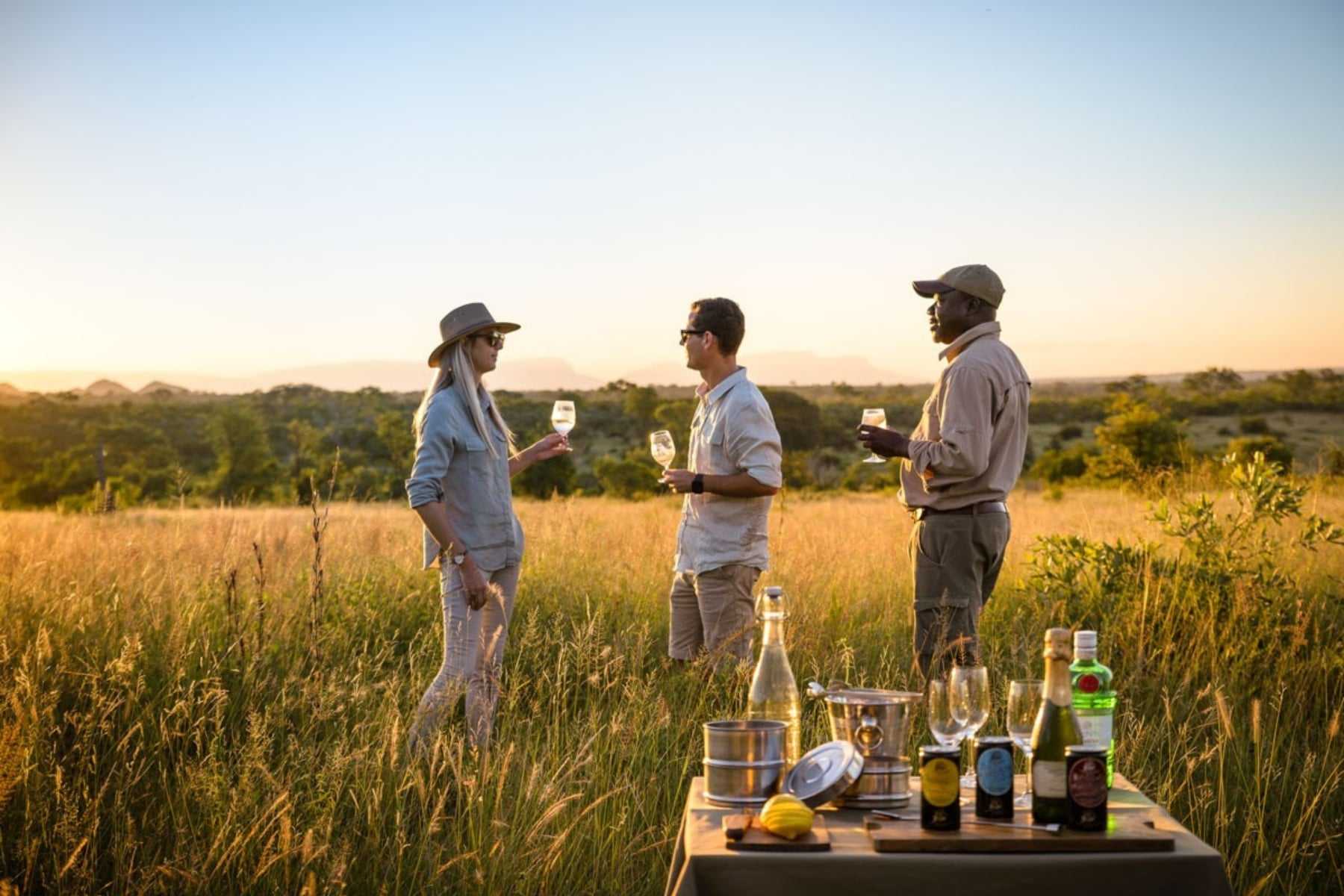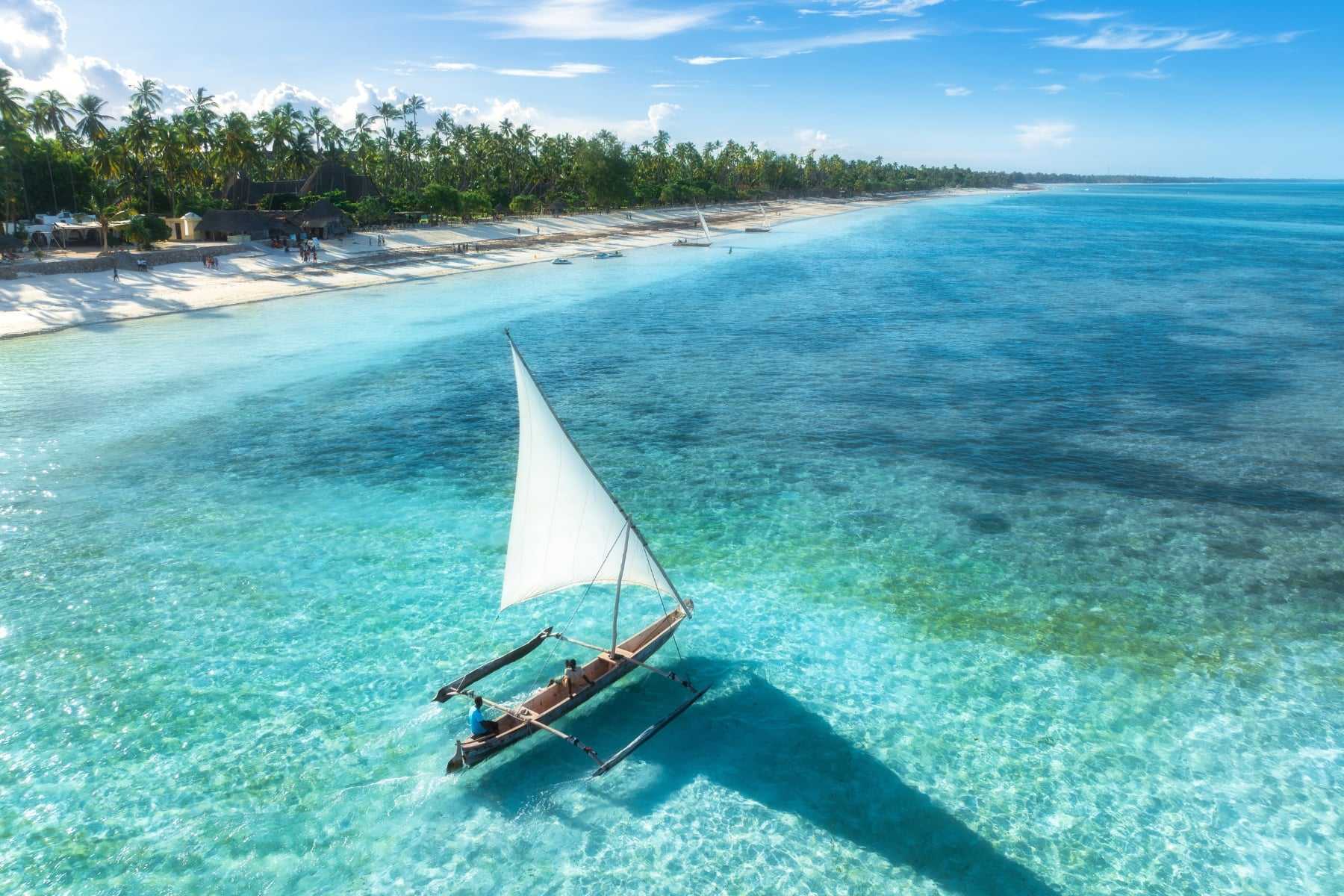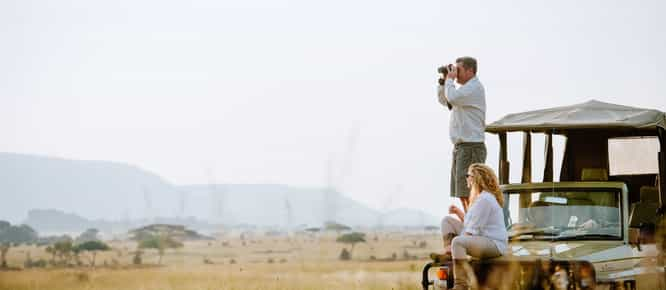Namibia’s enthralling, endless and exceptionally photogenic landscapes often take first place on a trip here, but the country’s unique wildlife is a disarming sight against the stark desert sands. On expeditions across Namibia, you’ll encounter species that have adapted to this seemingly uninhabitable land, making their sighting even more special. On the other end of the spectrum, there are Namibia’s lush natural anomalies (Etosha and Caprivi, we’re looking at you), where Southern Africa’s famous wildlife gathers in droves. Read all about Namibia’s wildlife stars in each region, from the rugged coast to scorched deserts.
Etosha
A haven in Namibia’s north, Etosha has become famous for ‘Lion King’ scenes around the waterhole that will have you packing your bag and binoculars in a snap. In fact, there are dozens of waterholes, all of which are frequented by elephant, lion, giraffe, zebra, kudu and warthog looking for a drink – or a bath! After the rainy season, Etosha’s shimmering salt pan turns into a lagoon where birdlife is a constant flutter, including thousands of flamingos and pelicans. Parked just a few metres from the waterhole, you simply need to sit and wait for the wildlife to appear. Then again, you might prefer to follow your guide on foot in search of black rhino and spend a rare moment in their presence.
Damaraland
With its vast tracts of rugged land and the tabular mountains that tower overhead, Damaraland is completely otherworldly. It is only inhabited by the hardiest of Namibia’s wildlife, which has adapted over centuries to survive on very little water – including altering their foot size. Food and water is scarce at the best of times, but during the dry season (from June to September), Damaraland’s elephants travel for miles to find rare pools of water and dine on drought-resistant plants. Most elephants need gallons of water each day, but these remarkable, desert-adapted pachyderms can go without a drop for up to three days.
Damaraland is also famous for its desert-adapted black rhino, which you will have the chance to track by 4×4, and then on foot. These rhino only need to drink water every third or fourth evening and are able to nimbly navigate mountain ledges to catch a cool breeze, find shade, and forage for succulents. Watching as they amble round boulders and nibble on something refreshing is quite unforgettable.
Skeleton Coast
The Skeleton Coast may be iconic for its dramatic, wave-lashed shores that welcomes very little life, but it is also home to a colony of over 200,000 Cape fur seals, who dip in and out of the water to feast on fish and loll along the beaches. December heralds the arrival of the very cute seal pups, and might also witness orcas or hyenas on the hunt for lunch. Turn your eyes to the sand where the fog beetle can be seen in a headstand, waiting for the fog to form droplets on its back before trickling them into its mouth.
Heading just inland from the coast, you could spot elephant, oryx, giraffe, ostrich and lion who have adapted to survive in this parched environment. Spend a morning at a hidden oasis and wait for the wildlife to arrive for a much-needed drink, or wait to catch a lion on the prowl. Interestingly, the desert-adapted cats receive most of their hydration from the animals they eat.
Sossusvlei & the NamibRand
Part of the oldest desert on Earth, Sossusvlei spends most of the year without rain, yet you will always spy the figure of a lone oryx seeking shade in the shadow of the dunes. Oryx are able to survive in conditions where most antelope cannot, which they do by conserving water, cooling the blood that flows to their brain and withstanding high body temperatures. Their muted colouring even acts as a heat deflector. When they can’t find a shady spot, oryx position themselves so most of their body faces away from the sun. In the NamibRand, you can track these stately antelope on foot – and luckily, you’ll have plenty of water!
In a secluded corner of the Namib-Naukluft Park, you can take up residence at the Garub waterhole in the hopes of seeing a herd of wild horses. These majestic creatures are the descendants of horses abandoned during World War I, who have adapted to the harsh desert over the generations and need far less water. To see them up-close is breath-taking.
After the sun sets, there is a collection of unique creatures to see in the dunes, including Cape fox, polecats, aardwolf and scorpions who glow under Ultraviolet light.
Caprivi
A slender slice of land in the north-east of Namibia, Caprivi is the exception to the rule in a country of deserts and dunes. Fed by Southern Africa’s great, flowing rivers, Caprivi has a microclimate in which water-loving wildlife thrives. On game drives and boat rides, look out for pods of hippo, crocodile, and herds of elephant, buffalo and waterbuck. Not to mention a prolific number of birds from coppery sunbirds to the western-banded snake eagle.
Kaokoland
A beautiful, sun-scorched landscape of sand, mountains and more sand, Kaokoland tests the mettle of every species that manages to survive here. On game drives, you’ll scour the dunes for zebra, oryx and brown hyena, and learn the art of tracking from your guide as you search for elephant.
Then, after the new year rains have filled Kunene River to the brim, its banks come alive with tall grasses and refreshed palm trees and it becomes a favourite spot for Nile crocodile.
Otjiwarongo
Otjiwarongo is Namibia’s conservation capital, where there are a number of projects devoted to protecting and rehabilitating leopard, cheetah and brown hyena. You’ll have the opportunity to witness these spectacular creatures rediscovering the wilderness, learn all about their conservation, and track them with guides who know how to read their every move.
Apart from the big cats, Otjiwarongo is a haven for other protected species including black and white rhino, roan and sable. You can spend a (hopefully!) eventful afternoon tracking pangolin, with your eyes ready to spot one of the most endangered animals on Earth.
Kalahari
At first glance, the Kalahari may seem devoid of wildlife but beyond its swathes of sand and desert shrubs, you’ll discover a world of unique species. Perhaps the most famous is the Kalahari black-maned lion, but there other predators including cheetah, caracal, bat-eared foxes and wild cats. And don’t forget to turn your eyes to the sky where lappet-faced vultures soar in search of a meal. The Kalahari is also home to a surprising number of antelope including impala, springbok, kudu, nyala and steenbok, as well as red hartebeest, warthog and ostrich.
Erongo & Swakopmund
Swakopmund may not be a wildlife destination in itself, but if you’re visiting between December and March, head down the coast to marvel at the thousands of flamingos that fill nearby lagoons.
The Erongo Wilderness Conservancy is an amalgamation of bush, mountain and desert habitats, which means a host of species coexisting together. While sightings are hard-won, you could spot black rhino, the tiny Damara dik-dik, Hartmann’s mountain zebra and giraffe, and a fantastic variety of birdlife.
